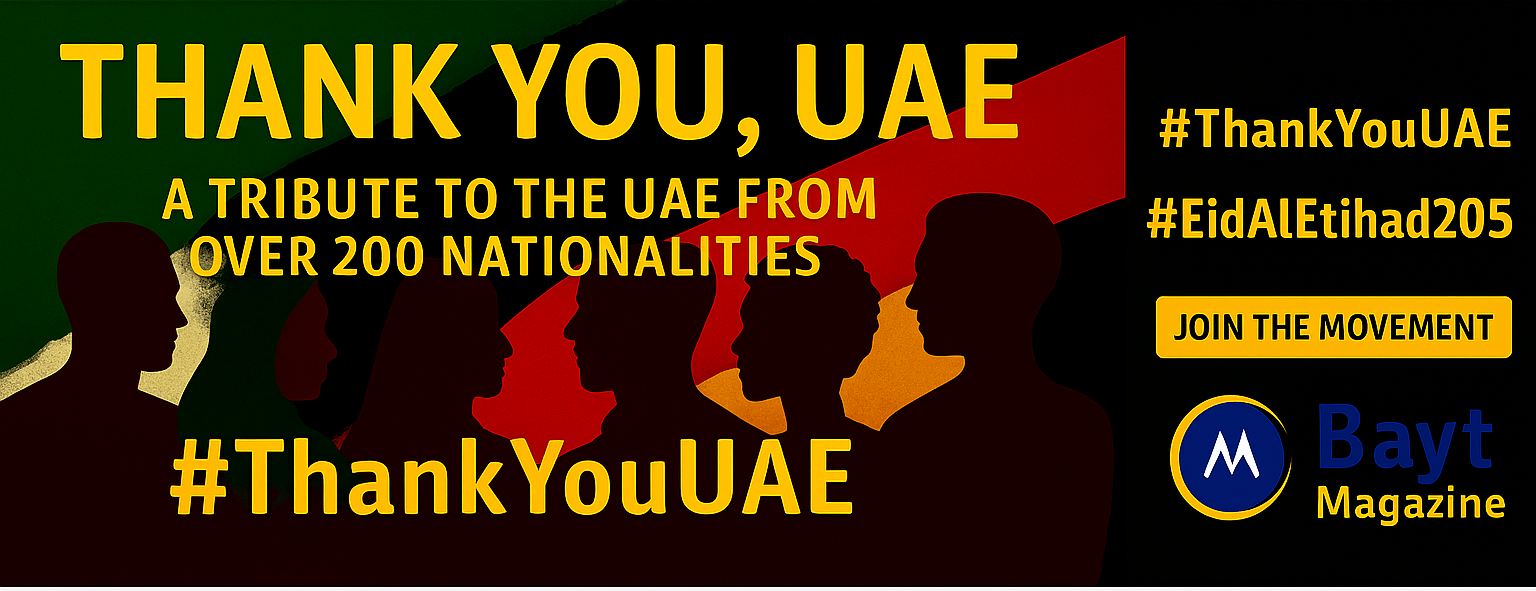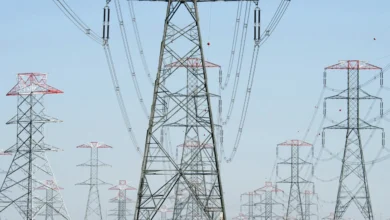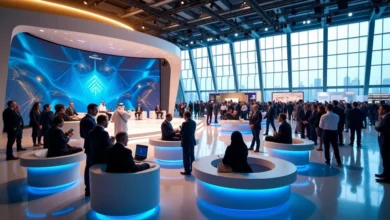
Trump Defies Wall Street as Market Plunges Over Tariffs
The markets experienced one of their worst weeks since the 2020 pandemic as Trump stood firm on his tariff decisions. Wall Street watched the S&P 500 crash more than 10% in just two days. This dramatic selloff wiped out $5 trillion in market value while investors tried to make sense of the century’s highest tariffs. The Dow dropped over 10% from its December peak and entered correction territory. The Nasdaq’s losses went beyond 20%, pushing it into a bear market.
The unprecedented 34% tariffs on Chinese imports have cast a dark shadow over the global economy. J.P. Morgan now sees a 60% chance of recession, up from their previous 40% estimate. Trump’s position remains steadfast despite market chaos and warnings from financial experts. This sets up a complex battle between presidential policies and economic stability.
Trump Challenges Wall Street Elites with Unyielding Tariff Stance

Image Source: Reuters
President Trump shrugged off Wall Street’s negative reaction to his sweeping tariff plan. This widened the gap between financial elites and his administration. “You can’t really watch the stock market,” Trump said. He showed little worry about market swings, though he often cited stock performance as proof of success.
How Trump’s ‘America First’ Ideology Confronts Financial Orthodoxy
Trump’s administration used a tariff formula that shocked economists worldwide. Treasury Secretary Scott Bessent tried to calm Americans. He moved attention away from quick market reactions. “We’re focused on the real economy: Can we create an environment where there are long-term gains in the market and long-term gains for the American people?”
The White House’s method of calculating tariff rates became highly controversial. Economic experts found that most tariff percentages came from dividing each nation’s trade deficit by its import value. Trump then cut this number in half as his self-described “discount”. This method goes against basic economic principles.
“Before yesterday, 99% of trade economists had never seen a formula like this before,” said Oren Ziv, an assistant professor of economics at Michigan State University.
Trump’s vision challenges what economists believe about global trade. His administration sees trade deficits as proof of foreign nations “cheating,” not as results of complex market forces. National Economic Council Director Kevin Hassett backed this viewpoint. He said “the U.S. Trade Representative looked at where the trade deficits were and adjusted the tariffs to respond to the national emergency”.
European stock markets surprisingly rallied after the election. This went against fears that “America First” would mean “Rest of the World Second”. Trump’s push for higher European military spending helped international military firms’ shares rise, boosting markets in countries targeted by his trade policies.
JPMorgan analysts warn that “potential U.S. tariffs could further threaten growth, as the EU economy heavily relies on exports”. Market rallies might not last.
Mar-a-Lago Golf Session Projects Confidence Amid Market Chaos
Global markets reeled from his tariff announcement while Trump played golf at his Mar-a-Lago course in Palm Beach, Florida. This scene – the president golfing as stocks tumbled – sent a clear message of confidence about the economic fallout.
Trump posted on social media before his golf game: “THIS IS A GREAT TIME TO GET RICH”. He stayed defiant on Truth Social throughout Friday morning. “TO THE MANY INVESTORS COMING INTO THE UNITED STATES AND INVESTING MASSIVE AMOUNTS OF MONEY, MY POLICIES WILL NEVER CHANGE”.
A White House official rejected claims that market reactions worried Trump. “The president has long warned of short-term pain created by his tariff vision and America First agenda”. The official added that Trump kept his “full attention” on tariff policy that Friday and “continued to send updates about conversations he had with foreign leaders”.
March jobs numbers showed 228,000 new jobs, beating expectations. These figures reflected the economy before his tariff announcement. Trump claimed this proved his moves worked.
Someone who talked with Trump during the market selloff said he stayed “largely sanguine” about his plan. Trump suggested tariffs were just one part of a bigger economic strategy taking shape. This matches what he told supporters earlier: “I’m not concerned about a little bit of volatility over three weeks”.
Trump’s choice to golf during financial turmoil shows his administration’s belief: short-term market pain matters less than reshaping global trade relationships for long-term gain.
Markets Tumble as Investors Struggle to Interpret Trump’s Endgame

Image Source: The Economic Times
Trading floors worldwide descended into chaos after Trump’s sweeping tariff announcement. The markets experienced one of their most severe reactions in modern financial history. Traders desperately tried to understand what these tariffs meant for the U.S. economy, as rates would climb to their highest point in over 100 years.
S&P 500 Plunges Over 10% in Historic Two-Day Selloff
The S&P 500 took a historic beating and dropped more than 10% in just two days. Friday’s trading ended with a 6% decline. Wall Street hadn’t seen such devastating losses since the coronavirus pandemic began in 2020, with the index dropping 9.1% for the week. Thursday’s bloodbath erased approximately AED 8.81 trillion in U.S. stock value. The market’s total losses over two days reached a record-breaking AED 23.50 trillion.
The Dow Jones Industrial Average crashed 2,231 points on Friday with a 5.50% decline. This confirmed a correction as it finished more than 10% below its December record high. The Dow’s 2,000-point single-day loss marked only the fourth such occurrence in history.
The tech-heavy Nasdaq Composite fell 5.8% on Friday and entered bear market territory. Its total decline reached 22.7% from December’s record close. Small-cap stocks couldn’t escape the carnage – the Russell 2000 index tumbled into bear market territory on Thursday.
Tech Stocks Lead the Decline as Supply Chain Fears Intensify
Tech companies took the hardest hit as supply chain disruption fears spread. Apple’s stock crashed more than 9% on Thursday – its steepest drop since 2020. Friday brought another 7.3% decline. The company’s market value shrank roughly 15% since Wednesday.
Other tech giants suffered similarly:
- Meta Platforms and Amazon both fell approximately 9%
- Nvidia dropped nearly 8%
- Tesla slumped more than 5%
Semiconductor stocks faced brutal selling pressure. Marvell Technology, Broadcom, and Lam Research each fell at least 10%. Micron Technology plummeted more than 16%, while Advanced Micro Devices dropped about 9%.
PC manufacturers saw dramatic losses after analysts warned of potential 10-25% cost increases per unit. Dell and HP shares tanked 19% and 15% respectively. Investors worried these companies would face squeezed profit margins or need to raise prices.
“Several tech companies have established local supply chains in China. Most source components from China already, and hence, disruptions should be controllable, though we do expect price hikes on parts and components not being sourced from China,” explained Nishant Udupa, practice director at research firm Everest Group.
Wall Street Analysts Scramble to Revise Economic Forecasts
Major financial institutions rushed to update their economic outlooks amid the market chaos. JPMorgan Chase predicted U.S. economic contraction in both third and fourth quarters. The bank raised its global recession probability estimate from 40% to 60% by year-end.
“The recession in economic activity is projected to push the unemployment rate up to 5.3 percent,” wrote Michael Feroli, JPMorgan’s chief economist. This represents about a one percentage point increase.
Federal Reserve Chair Jerome Powell heightened market concerns by calling Trump’s tariffs “larger than expected.” He warned that “higher inflation and slower growth” would follow. Powell deemed price increases “highly likely”.
The non-partisan Tax Foundation calculated that the tariff plan would amount to a “AED 6.61 trillion tax hike” for U.S. consumers and reduce imports by more than 25%. Oxford Economics researchers warned these tariffs could push global economic growth to its lowest annual rate since 2008, excluding the pandemic period.
Bowersock Capital Partners CEO Emily Bowersock Hill delivered a blunt message to investors: “The bull market is dead, and it was destroyed by ideologues and self-inflicted wounds”.
China Fires Back with Matching 34% Tariffs on American Goods

Image Source: AgWeb
China was quick to hit back at President Trump’s sweeping tariff initiative. They announced matching 34% duties on American imports, which pushed the trade conflict between the world’s two largest economies to levels never seen before. The Chinese finance ministry said these countermeasures would start on April 10, just a day after Trump’s tariffs took full effect.
“For all imported goods originating from the US, an additional tariff of 34% on top of the current applicable tariff rate will be imposed,” China’s State Council Tariff Commission declared in an official statement. This move matches Trump’s 34% tariff on Chinese goods, which adds to existing 20% levies for a total of 54%.
Beijing Targets US Farmers with Strategic Agricultural Restrictions
These Chinese countermeasures take direct aim at America’s agricultural heartland and could devastate U.S. farmers. Soybean producers in America face tough times ahead as these retaliatory tariffs now double what they paid during the 2018 trade war. The American Soybean Association calculates farmers will lose about AED 21.66 billion each year from these measures.
China also put immediate restrictions beyond the broad tariffs:
- Suspended poultry meat and bone meal imports from five major American poultry companies
- Halted sorghum imports from a prominent U.S. grain exporter
- Placed export controls on seven types of rare earth minerals essential for high-tech manufacturing
- Added 11 American companies to its “unreliable entity list,” effectively banning them from Chinese commerce
“This is going to cost the U.S. a lot of export business,” warned Jack Scoville, vice president of Price Futures Group. The timing hurts even more as Brazil stands ready with a bumper soybean harvest, already positioned to benefit from U.S.-China trade tensions. “Brazilian farmers will be by far the main beneficiary,” says Carlos Mera, head of Agricultural Market Research at Rabobank.
Chinese Officials Label Trump’s Move as ‘Economic Aggression’
Chinese authorities didn’t hold back in condemning Trump’s tariff strategy. The finance ministry called the U.S. approach “not in line with international trade rules” and “a typical unilateral bullying practice” that “seriously undermines China’s legitimate rights and interests”.
“China will never give in to Trump,” stated Wang Wen, dean of Renmin University’s Chongyang Institute for Financial Studies. He noted that Beijing remains open to “cooperation with the United States at the level of mutual respect and win-win cooperation”.
Beijing filed a formal complaint with the World Trade Organization. They argued that U.S. tariffs “seriously violate WTO rules” and “endanger the stability of the global economic and trade order”. Leah Fahy, a China economist at Capital Economics, sees China’s response as “a significant escalation”.
China’s retaliation goes beyond its previous measured approaches. Unlike earlier trade disputes where Beijing targeted specific sectors, this response matches Trump’s broad-spectrum approach. Craig Singleton, a senior fellow at the Foundation for Defense of Democracies, explains: “By matching Trump’s tariffs, China is no longer nibbling at the edges — it’s mirroring US actions head-on”.
Powell Warns of Inflation Surge While Trump Demands Rate Cuts

Image Source: The Independent
A fierce monetary policy battle erupted Friday when Federal Reserve Chair Jerome Powell raised alarm about inflation risks from tariffs. President Trump responded by demanding interest rate cuts. Their clash highlighted the complex economic challenges policymakers face as trade tensions grow.
Fed Chair Describes Tariffs as ‘Highly Likely’ to Increase Prices
Powell gave business journalists in Arlington, Virginia a sobering view of Trump’s tariff policy. “While uncertainty remains high, the tariff increases will be substantially larger than expected,” Powell stated. “These economic effects will lead to higher inflation and slower growth.”
Powell warned that tariffs would “highly likely generate at least a temporary rise in inflation”. He added that “the effects could be more persistent”. This inflation surge could surface “in the coming quarters”. Such a development would make it harder for the Fed to meet its 2% inflation target.
The Fed chair stressed his team’s dedication to stopping temporary price increases from taking root. “Our obligation is to keep longer-term inflation expectations well anchored. We must ensure a one-time increase in price level doesn’t become an ongoing inflation problem,” Powell explained. Consumer surveys show “rising concerns about inflation and dimmer expectations for future growth”.
Trump Posts ‘CUT INTEREST RATES, JEROME’ on Truth Social
As Powell spoke Friday, Trump took to Truth Social with direct calls for monetary easing. “This would be a PERFECT time for Fed Chairman Jerome Powell to cut Interest Rates,” Trump posted. His message turned more forceful: “CUT INTEREST RATES, JEROME, AND STOP PLAYING POLITICS!”
Trump backed his demand with economic data: “Energy prices are down, Interest Rates are down, Inflation is down, even Eggs are down 69%, and Jobs are UP, all within two months – A BIG WIN for America”.
Trump also shared a TikTok video suggesting he “purposefully tanked financial markets as part of a grand strategy to force Powell to slash interest rates”. This theory gained support among some followers.
Economic Experts Predict Fed’s Difficult Balancing Act Ahead
Economists see tough times ahead for monetary policy. The Fed faces what Powell called a “difficult” situation. They must manage higher inflation from tariffs while addressing potential economic slowdown and job losses.
Core inflation hit 2.8% in February, above the Fed’s 2% target before any tariff effects. The Fed seems focused on its inflation mandate rather than boosting economic growth through rate cuts. Powell said the central bank is “well positioned to wait for greater clarity before making any decisions about adjusting interest rates”.
Sameer Samana from Wells Fargo Investment Institute believes the Fed won’t abandon its inflation mandate. However, they “might be slower [to support the economy and labor market] than they otherwise would if the inflationary pressures weren’t present”.
Financial experts have split into two camps. “Some see the Fed holding off on rate cuts for the whole year, while others see them moving more aggressively, and potentially earlier, than originally expected”. Fed Governor Philip Jefferson stated recently, “In my view, there is no need to be in a hurry to make further policy rate adjustments”.
Markets now watch what Reuters called the Fed’s “wait-and-see approach”. Unprecedented policy changes have disrupted earlier predictions for potential interest rate cuts in 2025.
Top Republicans Express Concern as Trump Doubles Down

Image Source: The Independent
Republican senators have started to break party ranks and voice serious concerns about President Trump’s sweeping tariff policies as market volatility grows more intense. Several key GOP figures warn these measures could harm the economy and hurt the party’s chances in elections.
Senator Ted Cruz Calls Tariffs ‘Enormous Risks’ for Economy
Texas Senator Ted Cruz, who usually stands firmly behind Trump, called the tariffs “enormous risks” that could severely affect the U.S. economy. During his podcast, he warned that permanent tariffs, rather than using them as negotiating tools, would “raise prices, destroy jobs, damage the economy, and increase inflation”.
Cruz painted a stark picture. “If we go into a recession, particularly a bad recession, 2026, in all likelihood, politically, would be a bloodbath,” he cautioned. He stressed that this week might be “the single-most consequential week in the Trump administration so far”.
“Tariffs are a tax on consumers, and I’m not a fan of jacking up taxes on American consumers,” Cruz pointed out. Louisiana’s Senator John Kennedy echoed these worries: “in the long run, we’re all dead. Short run matters too. Nobody knows what the impact of these tariffs is going to be on the economy”.
Former Senate Majority Leader Mitch McConnell stepped away from party lines. “Make no mistake: Goods made in America will be more expensive to manufacture and, ended up, for consumers to purchase, with higher broad-based tariffs”. Senator Rand Paul also warned these tariffs could lead to the “political decimation” of the Republican Party.
Trump’s Base Remains Loyal Despite Economic Turbulence
Despite growing Republican criticism, Trump’s base shows strong support. About 80% of Republicans surveyed agreed that Trump’s economic actions “will pay off in the long run”. This shows his core supporters still believe in his policies despite market uncertainty.
Kansas Senator Roger Marshall defended Trump by saying the market was “overvalued” and described the economy as “a pretty complicated picture”. Senator Thom Tillis expressed concerns about farmers being “one crop away from bankruptcy,” yet indicated he would likely support legislation that limits presidential tariff authority.
Trump Deploys ‘Madman Theory’ in Global Trade Negotiations

Image Source: The Annapurna Express
President Trump’s confrontational tariff strategy reveals a calculated approach that experts call the “madman theory” of negotiation. His unpredictable behavior has shaped his global trade talks during market uncertainty.
How Unpredictability Serves as Trump’s Negotiating Tactic
Trump’s negotiation style centers on being unpredictable. He made this clear in his 2016 speech when he said America needed to be “more unpredictable”. The “madman theory” suggests that appearing irrational gives negotiators an advantage, especially when threats could get pricey to carry out.
Trump believes he gains an edge in negotiations through unpredictability. He keeps other parties guessing with phrases like “We’ll see” and his aides warn that he “might pull out at any moment”. This strategy worked well during his first term when South Korea made concessions after his team warned officials that Trump was “so crazy he could pull out any minute”.
Vietnam and Other Nations Rush to Secure Exemptions
Many countries now scramble to negotiate exemptions before tariffs take full effect on April 9:
- Australia’s Prime Minister Albanese wants to negotiate removal without using dispute resolution mechanisms
- Japan’s Trade Minister called the tariffs “extremely regrettable” and asked for exemption
- Taiwan’s officials called the tariffs “very unreasonable”
- Britain felt relief at avoiding higher rates while working on trade deals
The UK government continues talks with Washington to “avoid or reduce” tariffs. This gives Trump substantial leverage since countries must choose between negotiation and retaliation.
Treasury Secretary Bessent Signals Openness to Deals
Treasury Secretary Scott Bessent has clear advice for nations: “My advice to every country right now is: Do not retaliate. Sit back, take it in, let’s see how it goes”. He cautioned that retaliation would lead to “escalation” while holding back might mean “this is the high-water mark”.
Bessent explained that tariffs serve three purposes: they generate revenue, protect industry, and work as “the third leg to the stool” that Trump “uses for negotiating”. He showed optimism about possible solutions by confirming openness “to the idea that other countries’ tariffs could come down or go away”, which suggests potential paths to resolution through bilateral deals.
Trump’s groundbreaking 34% tariff policy has changed U.S. economic history and shaken global markets. Wall Street experienced its worst downturn since 2020, which erased trillions in market value. Trump stood firm with his confrontational strategy. China struck back with matching 34% tariffs that raised tensions between the world’s biggest economies. American farmers and manufacturers faced the biggest threats.
The Republican party leadership divided over this bold strategy. Federal Reserve Chairman Powell raised red flags about inflation risks. Trump’s base continued to back his economic vision despite these challenges. His supporters believed the market’s short-term pain would create long-term benefits. Several nations started bilateral talks because of Trump’s “madman theory” negotiation style, which opened possible paths to a solution.
Trump’s bold position clashed with traditional economic thinking and created a complex fight over America’s trade future. The markets’ instability, rising inflation fears, and global pushback pose major hurdles ahead. Trump showed he would accept immediate economic turmoil to reshape trade relationships. This decision tested both market strength and political determination, making this time a crucial part of U.S. economic policy history.





